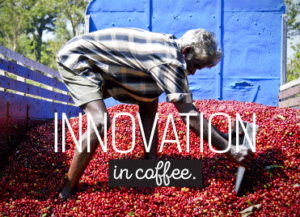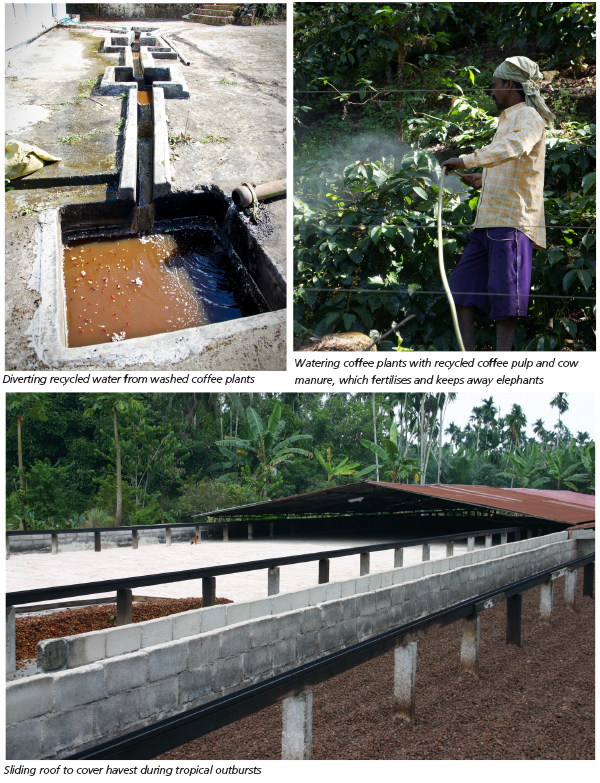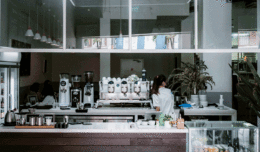When we think about innovation in coffee, what first comes to mind are the new ways we’re drinking it – cold drip, nitro-brew, turmeric-lattes. Or alternatively, the latest, wildly popular single-origin varietal, perhaps a new Couture Caturra? Maybe a Bourbon irrigated with 100% Rye Bourbon?
The innovations that fly under the radar are often the smaller, less-marketable ones that are happening at origin. It’s these changes in how coffee is grown which over time will more permanently evolve the quality and flavours that we encounter in our cups. Nitro-brew may come and go, but it’s the beans themselves that are here to stay.
What kind of changes are we talking about here? To start, most of the innovations in coffee that occur before they’re dropped into a roaster aim to achieve one of three outcomes. These include: to create a consistently higher-quality product, to fortify the product against damage and deterioration on its way to the consumer, and finally, to make the farm more sustainable.
Often, an improvement in one of these areas gives another a boost too – a good example of this is the practice of shade-growing coffee. In a number of countries, it was once the common technique when establishing a farm to cut away any existing forestation on the land being cultivated, in order to maximise the amount of space available for planting, and therefore produce more cherries. In recent times, however, attitudes are shifting – studies have shown that leaving some taller trees to tower over coffee plants can have numerous benefits. It increases and diversifies wildlife populations, reduces pest damage as a consequence of all those extra hungry mouths to feed, and creates better fertilisation on the forest floor as a consequence of said hungry mouths being satiated. One study in Jamaica found that insect-eating birds benefitted coffee farmers $125 per acre in pest control a year, making it a great outcome for the farmer, for the birds, and eventually for the consumer (it shouldn’t surprise anyone that beans without bugs are better).
Water usage is another example of an area where innovation is proving to have multiple pay offs. New methods for monitoring and reducing how much water is used on coffee farms is improving quality, reducing wasted crop, and saving precious water reserves. Coffee production can be severely affected by long-term water shortage, especially during the delicate early stages of flowering and fruition, when insufficient rains have been known result in up to 50% yield loss in some areas of the world. It also causes the quality of the surviving crop to suffer. Coffee farmers around the world are increasingly looking into new irrigation methods in order to gain more control over the conditions their plants grow in. This allows their product to become more consistent, better quality, and to improve yield. In particular, “localised” irrigation systems such as drip feeders are proving to be highly popular due to their efficiency. According to the Dutch NGO, Water Footprint Network, a standard espresso-style coffee represents 140 litres of water that go into the bean’s production – making sustainability of irrigation a high priority.
Certifications such as UTZ (founded 2002), Fairtrade (1992), and the Rainforest Alliance (1987) are another form of innovation that is proving to have numerous positive returns. Though these institutions have existed for some time now, they’re far from accounting for more than a small percentage of the world’s coffee production. It’s a practice that has been slow to take hold in areas of the world where the cost of becoming certified can seem prohibitive for individual farmers, especially if the benefits aren’t fully understood. By following the practices that are required of being certified, farmers can receive better prices for their product, the money can be reinvested into further bettering agricultural practices, the quality of life of the workers and local community can be improved, and the local environment can benefit and often positively impact the crop quality.
“These innovations aren’t really new,” you might think – and you’d be right to some extent. In western countries, most of these concepts are already familiar to us. We have to remember where coffee is grown though, and where the technology is being introduced. The reason irrigation is still innovative in this case is because we’re talking about farmers in remote areas, often third-world countries, embracing methods that are unfamiliar and often conflicting with those traditional ones that have often been passed down through their family or local community. The availability of digital technology has made it easier for those who can afford these resources to adopt new methods, but this isn’t universal. In Ethiopia, for example, one of the world’s most celebrated origins for coffee, it’s believed that up to 90% of their crops are produced by smallholder farmers owning on average about 2.5 hectares of land that they and their family work. With limited access to the internet and libraries, these farmers depend heavily on word of mouth, and in best-case scenarios, co-operatives for information on what new methods are proving effective in the wider world of coffee.
Co-operatives are one of the most successful ways for innovations to be proven and spread through the coffee-farming community. They provide a fantastic opportunity for farmers to direct their united energy and investments into making improvements in quality, productivity, and sustainability that would be unattainable as a private pursuit for a single operator. One example of such success is COOCAFÉ, a second level cooperative of nine producer cooperatives in Costa Rica with a total of 4,000 small farmer members. Since its founding, COOCAFÉ has reduced its water usage to a tenth of original levels, as well as halved chemicals, started transitioning to organic production, and invested in reforestation.
In a sense, for quite a few areas where coffee is grown, innovation in itself is the biggest innovation. Coffee has been cultivated by mankind since the 15th Century, and in the few hundred years that have elapsed since that time, it’s only really in the last 50 years that we’re seeing significant changes to the way it is grown. While we can, in the digital age, use sophisticated technology to measure moisture, the reality is that the people who actually grow coffee are using recycled plastic bottles stuck into the earth to check soil water-retention, as was recently reported in Vietnam. Innovation can sometimes have a price, but the path to it is ultimately education, and that shouldn’t cost anyone the earth.
ABOUT THE AUTHOR
India is the Marketing and Social Media Co-ordinator at Bennetts. Passionate about learning and communication, India has a Bachelor of Arts majoring in Literature and Art History from the University of Melbourne, and is continuing her Post-Graduate studies in Design Strategy and Innovation at Swinburne University. India is committed to helping Bennetts, our customers and ultimately consumers, by bringing the global coffee & tea industry closer together through collaboration, sustainable outcomes, as well as new knowledge, technologies, education and data.




















